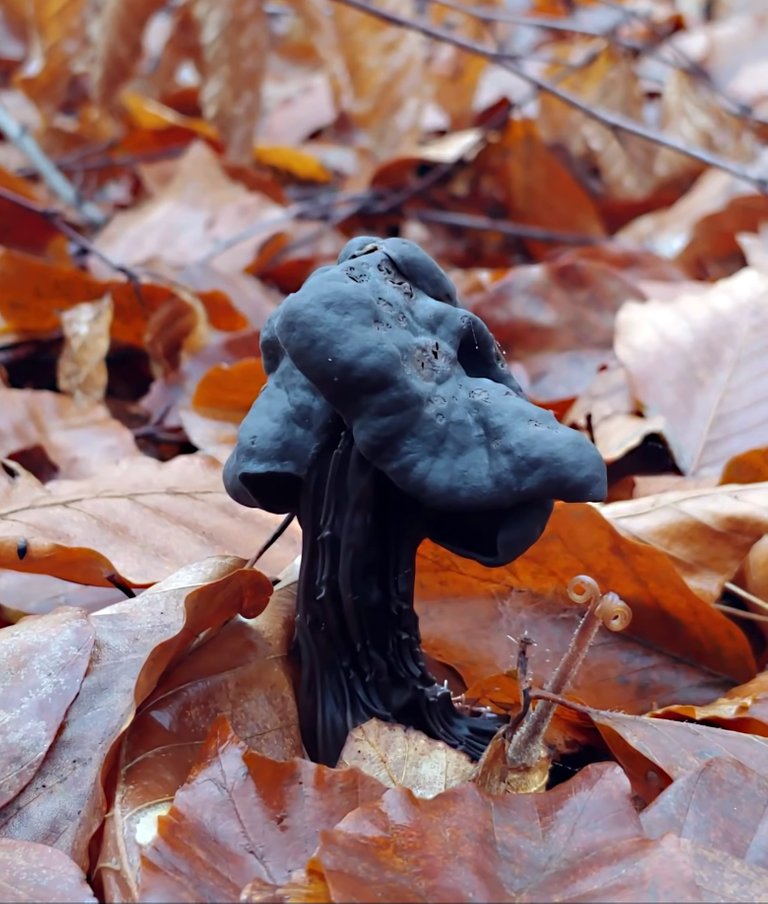
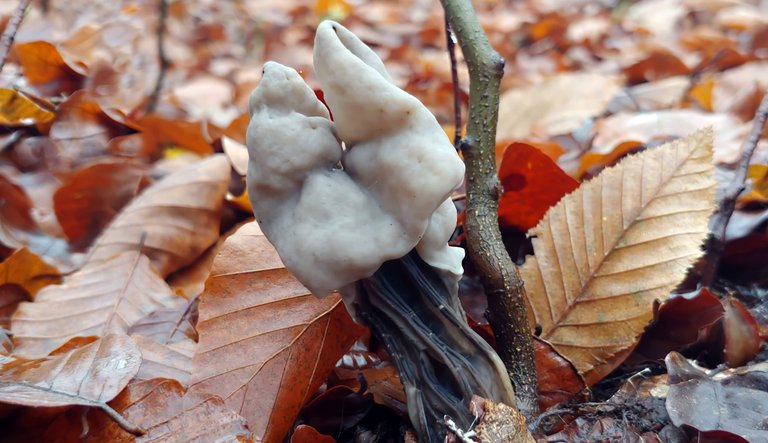
| EN | PL |
|---|---|
| Slate gray saddle or Fluted black elfin saddle (Helvella lacunosa) - the mushroom has a stem and a clearly distinguished hat, which may be up to 5 cm in diameter. The color of the hat can be different, from black, through graphite, gray-blue, gray. It is folded and consists of several irregular lobes. | Piestrzyca zatokowata (Helvella lacunosa) - grzyb posiada nóżkę i wyraźnie wyodrębniony kapelusz, który może mieć do 5 cm średnicy. Kolor kapelusza bywa różny, od czarnego, poprzez grafitowy, szaro-niebieski, szary, popielaty. Jest pofałdowany, składa się z kilku nieregularnych płatów. |

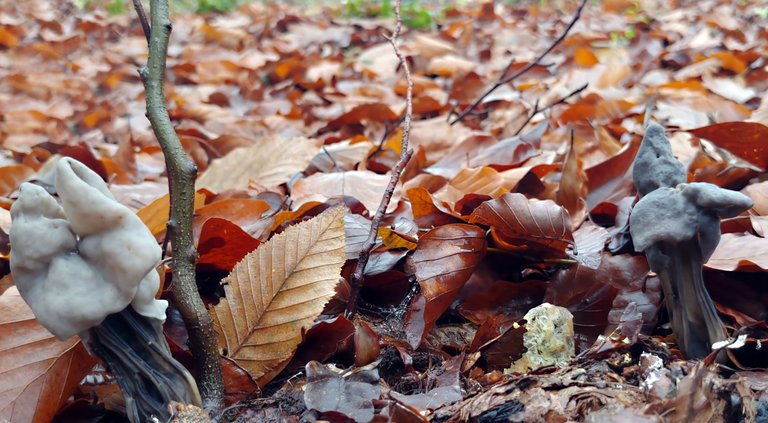
| EN | PL |
|---|---|
| The leg is quite characteristic, of an irregular shape, grooved, folded, ribbed, sometimes twisted. Reaches a height of about 10 cm. It can be white-gray, light gray, dark gray, graphite, often translucent. It is empty inside, up to 3 cm thick. | Nóżka jest dość charakterystyczna o nieregularnym kształcie, bruzdowana, pofałdowana, żebrowana, czasami poskręcana. Osiąga wysokość około 10 cm. Może mieć kolor białoszary, jasnoszary, ciemnoszary, grafitowy, często półprzezroczysta. W środku jest pusta, grubość do 3 cm. |


| EN | PL |
|---|---|
| Flesh of the mushroom is delicate, brittle, whitish in color, light gray. It does not have a characteristic taste or smell. | Miąższ grzyba jest delikatny, kruchy koloru białawego, jasno-szarego. Nie posiada charakterystycznego smaku ani zapachu. |
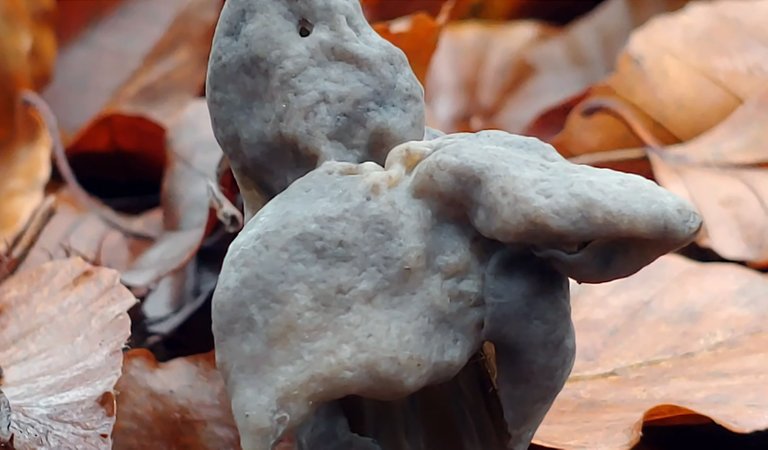
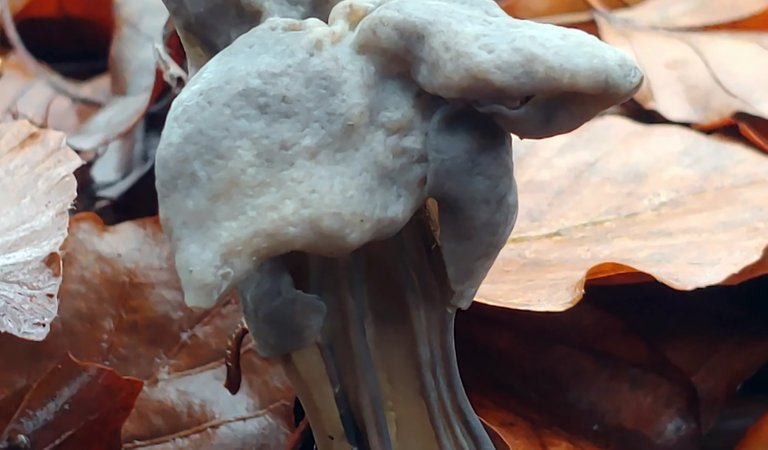
| EN | PL |
|---|---|
| Occurrence. It is quite popular in the world, but in Poland it is becoming rarer and is on the list of endangered mushrooms. It appears in spring, in May, and grows until late autumn. Mushrooms grow in deciduous forests, they like beech forests, but they can also be found in mixed forests. They often appear in clearings, in places where fire was burning (similar to Morchella). Most often it grows in small groups. Usage: Edible mushroom. | Występowanie. Na świecie jest to grzyb dość popularny, natomiast w Polsce coraz rzadszy i znajduje się na liście grzybów zagrożonych wyginięciem. Pojawia się wiosną, w maju, i rośnie do późnej jesieni. Grzyby rosną w lasach liściastych, lubią lasy bukowe, ale można je również spotkać w lasach mieszanych. Często pojawiają się na polanach, w miejscach gdzie palił się ogień (podobnie do smardzy). Najczęściej rośnie w małych grupkach. Zastosowanie: Grzyb jadalny. |
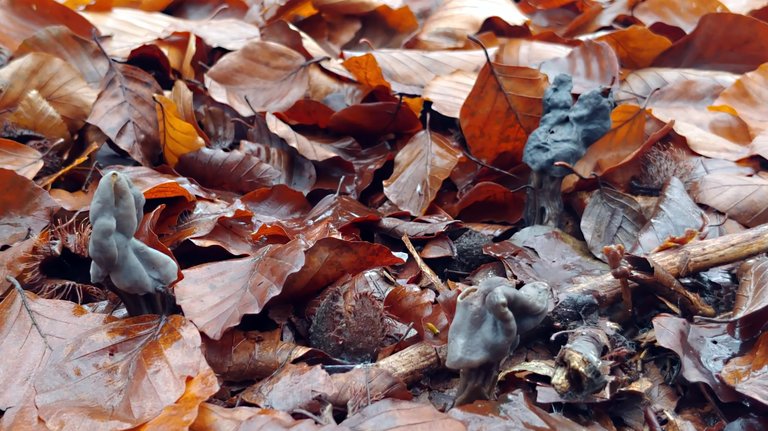

I am bookmarking all these posts, you’re making HIVE an awesome fungi library!
Wow black helvellas awesome. I have only found a white one once.